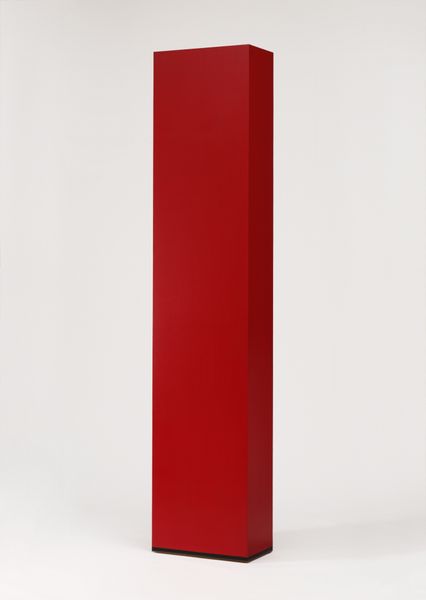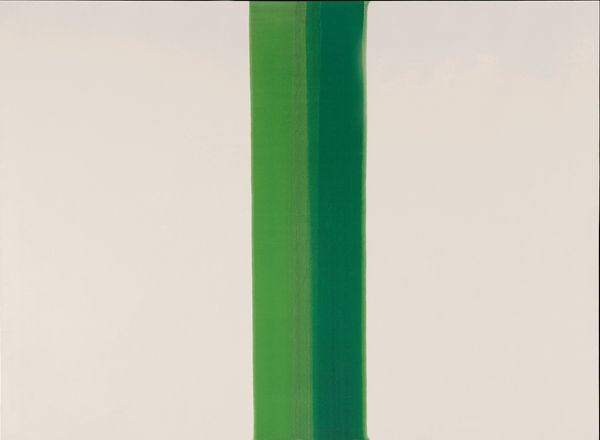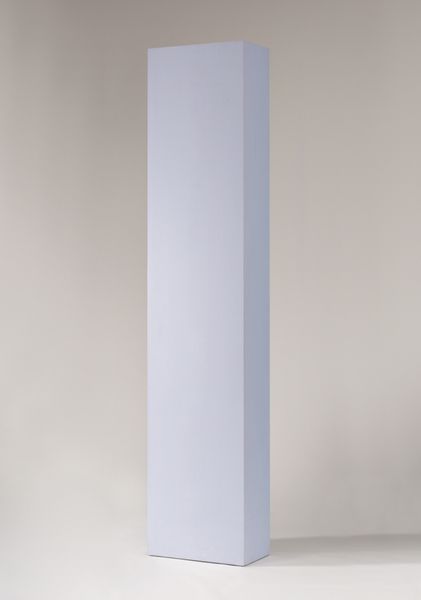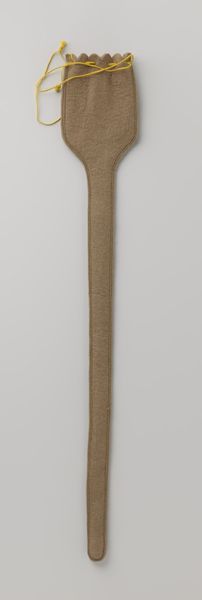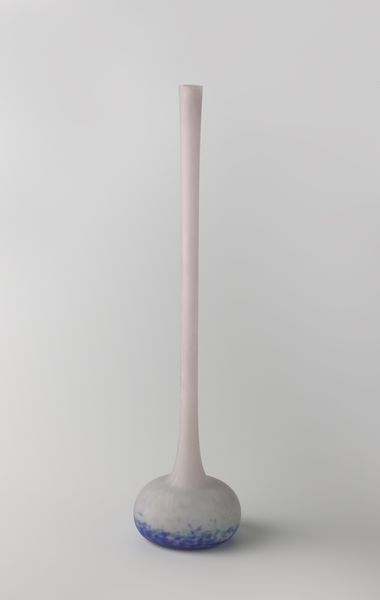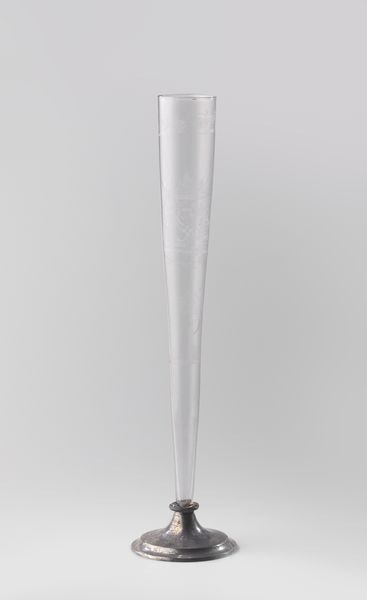
Dimensions: overall: 208.28 × 20.32 × 20.32 cm (82 × 8 × 8 in.)
Copyright: National Gallery of Art: CC0 1.0
Curator: This towering sculpture is "Summer Remembered," crafted by Anne Truitt in 1981. It's constructed from wood and coated with layers of vibrant color. Editor: It's remarkably…optimistic, isn't it? The scale, the sheer unwavering verticality coupled with that confident, almost blinding, yellow...It's assertive and bright, demands attention. What statement do you think she’s making with it? Curator: Well, within the context of Truitt's oeuvre, this piece is deeply rooted in her exploration of personal experiences and emotional landscapes. Color was everything for her; she once called it pure feeling. Given the title and date, "Summer Remembered," invites consideration through a feminist lens and the role of memory within women's lived experience. How do societal structures inform and dictate that remembering? And which voices are missing? Editor: That contextual framing certainly adds layers. Considering Truitt's position in a male-dominated art world during the late 20th century, it does invite such a critical interpretation of art history itself. Thinking more plainly about reception however, it’s hard to deny that even today in most major museum collections of postwar art, pieces such as "Summer Remembered" continue to stand apart in conversations concerning Abstract Expressionism or Minimalism. Why aren't we talking more openly about the socio-political forces at play here, regarding a lack of women included? Curator: Exactly, "Summer Remembered" doesn't exist in a vacuum. We have to consider its dialogue with Minimalism, for instance. Truitt shared its interest in stripping away narrative, focusing on pure form. Yet, the intense emotion embedded in the color choices separates it from the cool detachment often associated with the movement. That's why her practice resisted art world labeling altogether. How do these intersectional points play out? Is that remembered joy or resilience? Is the work inviting or cold? Those factors shape one's lived interpretation, too. Editor: That tension is potent. Viewing art with attention paid to politics is essential, particularly when discussing the art-historical cannon, because ultimately those discussions themselves are shaping culture. It helps one look closer and with more active questioning and humility. Curator: I agree. Ultimately, encountering a work like "Summer Remembered" means navigating its complex position—a monument of color and memory pushing back against the structures it encountered and, arguably, continues to confront. Editor: Precisely. A powerful intervention, a challenge.
Comments
No comments
Be the first to comment and join the conversation on the ultimate creative platform.
